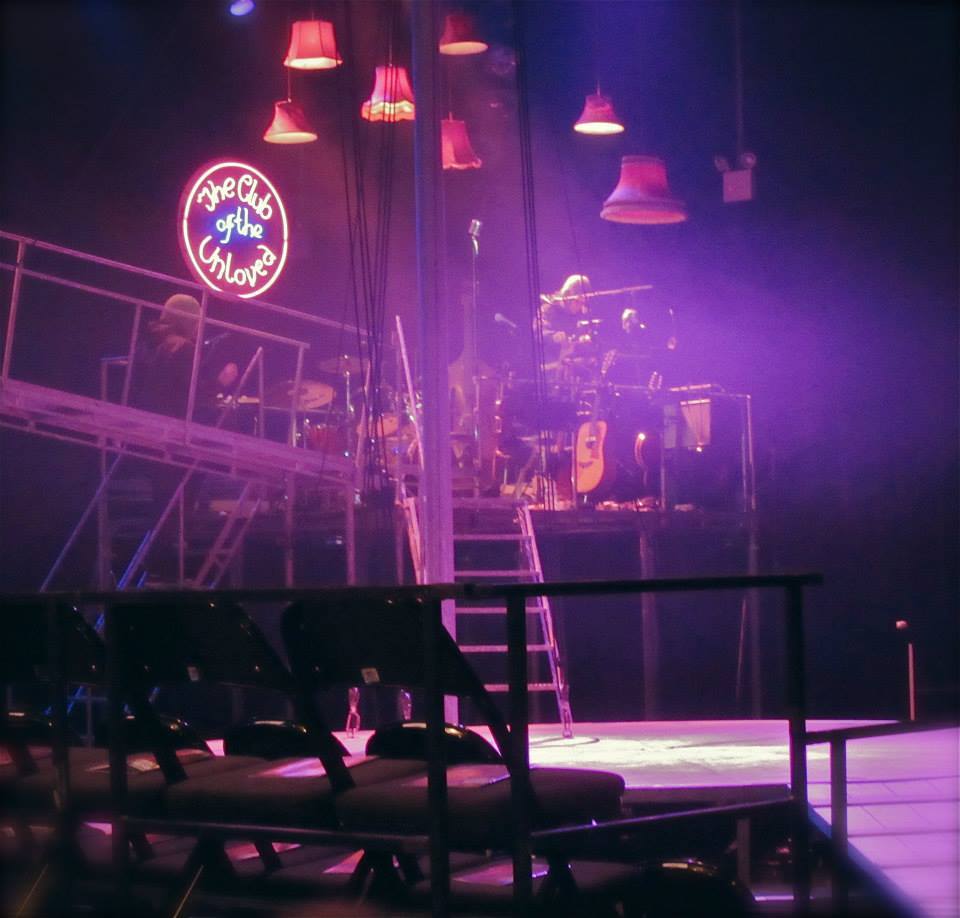The story of Tristan and Isolde shares with Romeo and Juliet a special status among the archetypes of love, which for the Romantics was a thing so strong that it doomed its feelers, its sublimity fulfilled only through the greater sublimity of death. But I am convinced, having seen TRISTAN AND YSEULT, which revives the Kneehigh adaptation of the tale at St. Ann’s Warehouse and includes on its soundtrack Wagner’s “Liebestot,” that its theme is not love or death per se but grief or sorrow. I find it impossible to hear the “Love-Death” without going beside myself, which was exactly the case when it swelled during the tragic unraveling.
I refer, of course, to grief aestheticized, resembling the real thing only by association. Sorrow in the theater can be exhilarating, intensifying the joy that went before; it is a different matter in life, most of the time, where its purpose is to assuage rather than intensify. But if the postmodern (as which the Kneehigh aesthetic plainly qualifies) has a primary virtue, it is that it collapses the sense of the time upon which grief in actuality depends; we are trans-historical, as well as trans-cultural, beings, and in TRISTAN AND YSEULT, the contemporary bores to the base of the archetype, like a plumb hitting sea bottom, or the drill its lake of oil.
There is a band playing as the legend unwinds, in the neon-signed Club of the Unloved, who dress in hipster chic, with a nautical twist; there is already something backward looking in the retro outfits and their repertory of rock, jazz, punk, standards, and folk. The nautical motif (oceans are crossed between France, Cornwall, and Ireland) extends to a yardarm of the sort one sees at memorials for lost vessels, which stands center-stage, and a chorus of “Love-spotters,” dressed in sailing jackets and skull caps, scanning the horizon with binoculars (an allusion, maybe, to the trainspotting vogue of the ‘90s). Kneehigh blandishes us with song and dance and narration parsed in clever, lilting verse, rather like Wilbur’s in his translations of Molière (Carl Grose and Anna Marie Murphy are the writers). The tale was the stuff of Cornish tradition and French retelling before Wagner converted it to music drama, but we assent to it in 2014, our hearts still bound by the sinews of the ancient. There is acting of verve, lustiness, and physicality, and, when it is called for, wry restraint: the director-adapter Emma Rice has an eye for when to cover up and when to reveal, be it a thigh or an emotion.
The bones of the tale are well enough known, but are laid out respectfully, with clarity and wit. The Irish Frocin seizes Cornwall; the French Tristan (“born in sorrow,” as his name implies) restores Mark, the Cornish king, to power and on his orders kills Frocin; Mark seizes Yseult, sister of Frocin, in revenge (as Frocin took his lands), but falls in love with her for real – after she has fallen for Tristan not knowing he was her brother’s assassin. Thus she initiates the line of tragic heroines who remain or fall in love with a man – Romeo, or Don Juan, or the Cid, or even Richard III – who has killed a kinsman or husband. And so with the aid of potions and bed tricks and misunderstandings is the foundation laid for tragedy: the Tristan tale is, like Romeo and Juliet, a comedy gone horribly wrong, of which fact the rambunctious troupers of Kneehigh are ideally suited to take advantage.
The potion abetted affair between Yseult and Tristan begins as a crazy tango, which goes aerial on the yardarm; the audience puffs up white balloons and releases them at the wedding of Mark and Yseult; there is a louche rival and a cross-dressing maid; a woman named Whitehands who is the alter ego of Ysuelt; and more. The archetypal depth of the tale persists all the stronger for this treatment, and no binocular in the world could spot a weakness among the players, even if the women, the retro-slinky Kirsty Woodward as Whitehands and the amazing Hannah Vassallo as Yseult, stand out just enough to take the foreground. There is not much in the theater that is as good as TRISTAN AND YSEULT and much less that is better. Go.
For information on upcoming events at St. Ann’s Warehouse, click here.
